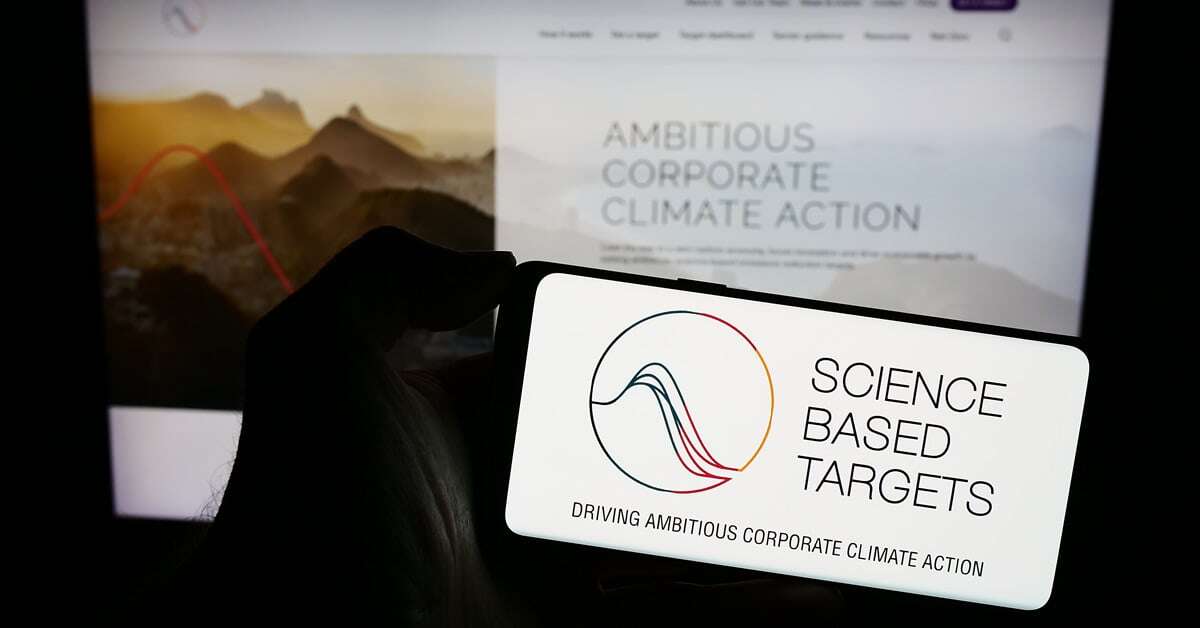5 min read
Science Based Targets Allowing Carbon Credits in Controversial Change
ResourceWise
:
Apr 12, 2024 12:00:00 AM

The Science Based Targets initiative (SBTi) is evolving its stance on carbon credits.
Previously, the organization focused solely on acknowledging these credits for offsetting remaining emissions. However, SBTi now aims to permit the use of environmental attribute certificates (EACs) to address scope 3 emissions.
The announcement also said the certificates will include those from voluntary carbon markets. The move is controversial as it seems to contradict the organization’s prior stance on carbon credits. Many members of SBTi’s team have also expressed serious concern over the announcement.
This post will dive into the issue to better understand what it could potentially mean.
How Carbon Credits and Scope 3 Emissions Interact
In general, emissions reporting requirements are divided into three degrees, or scopes:
- Scope 1 Emissions: These refer to the direct emissions from owned or controlled sources in a business. An example of this is the fuel burned in company vehicles.
- Scope 2 Emissions: The emissions which stem from indirect energy sources the company uses. For instance, the electricity consumed in a company building, but produced elsewhere, is Scope 2.
- Scope 3 Emissions: These emissions cover all other indirect emissions from a company's value chain. This could span across both the downstream and upstream of business operations. For instance, a Scope 3 emission includes the lifecycle of products bought, used, and eventually thrown away as waste.
Scope 3 emissions are typically the most significant and challenging for businesses to reduce due to the complexity involved. This leaves many companies struggling to adequately track, account for, and ultimately reduce emissions in these areas.
These challenges are what influenced the SBTi Board of Trustees to announce its change. Scope 3 emissions might now be mitigated through a careful application of carbon credits.
Related: How Science Based Targets Make Real Progress in the Carbon Transition
From a corporate standpoint, this could be a solution to help make emissions abatement achievable at this level. Yet the change could also potentially cause the same problems seen across the carbon credits market, such asfraud and ambiguous standards.
SBTi Corporate Net-Zero Standard Changing
Introduced in 2021, SBTi's Corporate Net-Zero Standard set forth four key criteria for achieving science-aligned net-zero objectives:
- Near-term targets: The primary "near-term" target is realistic emissions cuts (roughly half) by the fast-approaching 2030 deadline.
- Longer-term targets: Achieving a 90% or greater cut of all emissions before 2050.
- Residual emission neutralizing: Working to address the remaining 10% after the 90% reduction has been accomplished.
- Beyond value chain mitigation (BVCM): Making radical shifts in decision-making to lower emissions outside of a business’s direct value chains.
Currently, SBTi's guidelines restrict carbon credit use to offsetting emissions after implementing science-based reductions, or for voluntary actions beyond the value chain. The standard asserts that carbon credits cannot count towards immediate or long-term science-based objectives but may offset residual emissions or support additional climate mitigation actions.
But a significant change is on the horizon. SBTi plans to revise its Corporate Net-Zero Standard. The change will include new guidelines for using environmental attribute certificates, like carbon credits, for indirect emission reductions.
This expansion aims to leverage these certificates as an additional tool for climate control. Most notably, the goal is to help improve mitigation efforts for the challenging Scope 3 emissions.
Specific Details on Changes Yet to Come
Details on the specific rules, thresholds, and how these changes will be implemented are pending and expected by July 2024. Key considerations will include the types of certificates valid for Scope 3 mitigation and any limitations on their use.
SBTi's recent documents describe environmental attribute certificates as a means to measure, verify, and trace the environmental benefits of climate control projects. This seems to hint at a much broader range of potential certificates to include.
SBTi has stated it will not assess the quality of carbon credits directly. The organization will leave that responsibility to more appropriate entities. Instead, it will outline demand-side boundaries for their use.
Criticism of the Announcement by SBTi Staff
Many companies could potentially benefit from Science Based Targets changing its stance on carbon credits. However, not everyone in the organization feels the same about the change.
The SBTi staff has put out a response letter to the board of trustees. In that letter, members of the company expressed their concern over the announcement. They said that that the SBTi Board of Trustees undermined the organization's standard governance processes and procedures.
The letter clarified that the organization has moved forward on a “Call for Evidence” process to assess EACs. However, their analysis is still in motion to determine how suitable these certificates (carbon credits included) would be for emissions accounting.
The letter does not strictly dismiss EACs and carbon credits as potentially beneficial methods for carbon accounting. But the staff does clarify that the company’s strict standards have not changed whatsoever in wake of this announcement.
This last point was perhaps the most important of the letter. The staff reiterated their strong commitment to the rigorous processes and evidence-based approach they take to emissions reduction strategies.
The concern is that EACs and carbon credits have not yet been vetted with enough evidence to present them as possible mitigation options the organization could provide. This is why the Call for Evidence process is so critical. Once the analysis is complete, the organization can provide clearer guidance on the effectiveness of EACs and carbon credits.
The Future of Carbon Credits
While direct emissions goals exclude carbon credits, their potential application for Scope 3 emissions presents a big opportunity for companies with extensive upstream or downstream emissions. Overcoming the challenges of influencing emissions from partners deeper in the supply chain is a common hurdle for many organizations.
As SBTi progresses with these changes, the impact on carbon credit demand could be profound. This holds especially true for larger global corporations with significant Scope 3 emissions.
800 companies are already committed to SBTi's net-zero goals, and another 3000+ are actively planning to commit as well. The shift to credit-based mitigation strategies for near-term emissions could drastically increase the demand for voluntary carbon markets (VCMs).
But will this increased demand interfere with the SBTi’s true mission of eliminating emissions? Does the inclusion of EACs potentially open the organization to greater risk of greenwashing?
Carbon credits have seen their fair share of controversy for many reasons. Issues like fraudulent reporting and ambiguous reporting standards have plagued the carbon credit market. This has led many organizations to move past carbon credits and pursue more tangible emissions reduction strategies.
The SBTi uses evidence-based strategies that are developed with scientific rigor. The problem with carbon credits is that the evidence is not clear about their effectiveness.
The company’s announcement said that the SBTi will not handle the vetting of carbon credit quality. If they’re not the ones verifying this quality, there is no realistic path to consistent, measurable results.
This is the main problem with carbon credits. And it’s why so many companies have stopped pursuing it as a worthwhile decarbonization option.
In fact, ResourceWise President and CEO Pete Stewart predicted the downshift in carbon credits adoption in the forestry industry last year. As he put it:
“The world is coming around to the fact that carbon credits, of any kind, are just a license to pollute more.”
—Pete Stewart, ResourceWise President and CEO
Carbon credits and EACs may reflect one route to help address the far-reaching challenges of reducing Scope 3 emissions. But unless SBTi can confirm their value, they will remain a shaky (and controversial) option for decreasing emissions and achieving actual carbon reduction goals.
ResourceWise: Your Source for What's Important
ResourceWise provides key news, insights, and critical price reporting for all major areas of the low carbon fuels and feedstocks sector. Our Carbon Mitigator report is designed to help businesses harness the market as they transition to a net-zero carbon future.
Learn more about the Carbon Mitigator report, only available in Prima CarbonZero from ResourceWise.





